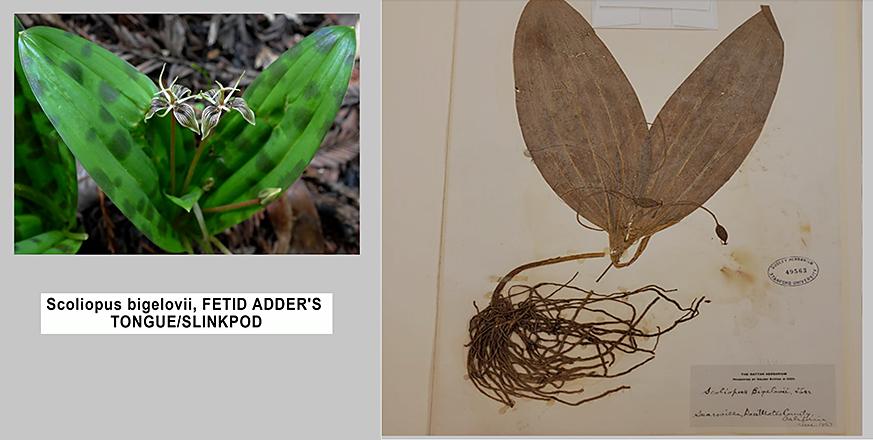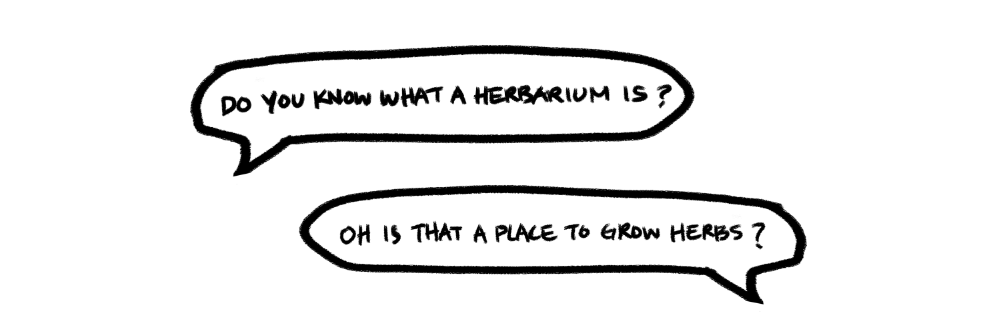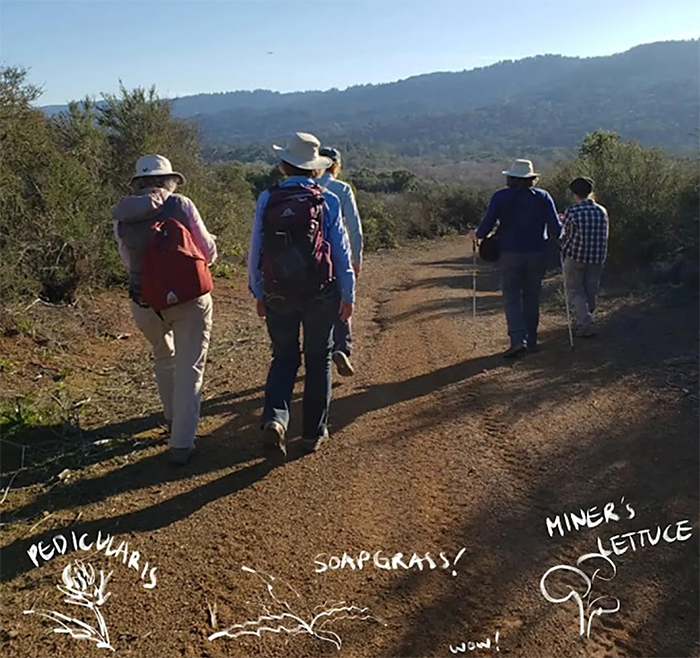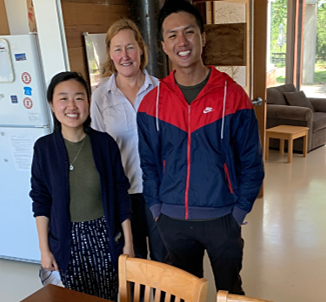It is your turn to (virtually) explore the herbarium! The story of the Oakmead Herbarium and Collections Virtual Field Trip

Right before the 2021 Fall quarter started, I took a Stanford Graduate Summer Institute (SGSI) course called Exploring Planetary Stewardship with Dr. Nicole Ardoin. This week-long course brought together graduate students from various disciplines, touching on a range of topics from sustainability and systems thinking to virtual field trips and Jasper Ridge Biological Preserve. I met Eugene here; while our areas of study were different (Education and Engineering), we were both interested in using technology for education. Eugene reached out to me about creating a virtual field trip and our partnership took off from there.
As we were brainstorming, I noticed that whenever I mentioned anything about a herbarium to people in conversation, barely anyone knew what it was.

Figure 1. Example of Vicky's conversation with others about herbariums.
It then clicked for me-- perhaps our focus of our virtual field trip could be on a herbarium! Stanford’s herbarium, known as the Oakmead Herbarium, is located in the Field Station at Jasper Ridge Biological Preserve and is mainly used for research purposes. Eugene and I started talking to Dr. Jorge Ramos, who then connected us to herbarium docents Dawn Neisser and Ann Lambrecht. We were touched by their enthusiasm and had a great conversation on what this virtual field trip could look like.
Our Process
Our goal was to create a virtual field trip for Stanford students who were interested in the natural world but did not know what a herbarium was. We started with conducting need-finding with BIO / ESYS 105 students and learned what students preferred to see. After figuring out our priorities, we consulted with herbarium docents on what resources and plant specimens to feature. In December, Eugene and I got to accompany herbarium docents, Rebecca Reynolds, Diane Renshaw, Dawn Neisser, Mary Bernstein, Alice Cummings on a plant walk, where docents would keep an eye out for plants of interest.

Figure 2. In the field with Rebecca, Diane, Dawn, Alice and Mary. Pictured below are sketches of plants we saw along the way.
Over the next month, we were able to record footage on how to collect a plant specimen, stories around the herbarium and the process of how a plant is processed into the collection.
By the end of winter quarter, we got our first prototype ready! The field trip was built with the software Pano2VR, which allowed us to put together 360 photospheres, photos, text and videos. As an initial prototype, we got more familiar with the software and got valuable feedback on what we could improve and add to our field trip.

Figure 3. The feedback we got on our initial prototype and the improvements we made in the final version.
Over the 2022 Spring and Summer quarter, we got to work on upgrading the field trip. We took the feedback and ended up increasing the number of rooms, customizing the textbox interface, and formatting the videos more clearly. It was great to hear that people who tested the next iteration of the virtual field trip enjoyed it and learned more about what a herbarium is, how it can be used, why it is important. After a few more tweaks and technological fixes, we finished the final version in Fall 2022. Please check out the herbarium field trip here!

Figure 4. This gif shows the starting screen of the virtual field trip and clicking on the START HERE button.
Ending Thoughts by Vicky Z. Chan
I hope that students and visitors of Jasper Ridge will find this virtual field trip insightful. I’ve personally been wanting to use digital tools for natural history science communication and am very happy with how this turned out. Virtual field trips for collection spaces with this level of interactivity have not been done yet, there is a lot we learned from this experience. It was a great experience working with Eugene, Dawn and Jorge on this project (s/o to Dawn, who has especially supported our project with care and thoughtfulness). Thank you to the herbarium docents for helping us put this together, students who gave their feedback, and the Stanford Accelerator for Learning virtual field trip team for guidance. We hope this trip could be used as a framework for creating more educational, engaging field trips like this of collection spaces and beyond.
Image at top of page: The oldest plant specimen in the Oakmead Herbarium and Collections, collected in 1867.
 Vicky Chan (School of Education, M.S., 2022)
Vicky Chan (School of Education, M.S., 2022)
Dawn Neisser (Jasper Ridge docent)
and Eugene Tang (School of Engineering, M.S., 2022).



